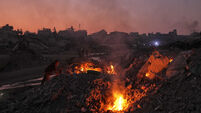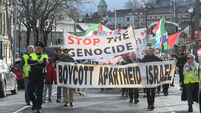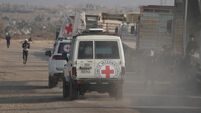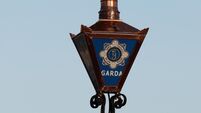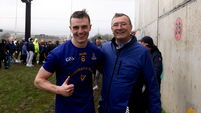Risk to Irish plots as Israeli bombardments hit Gaza cemeteries
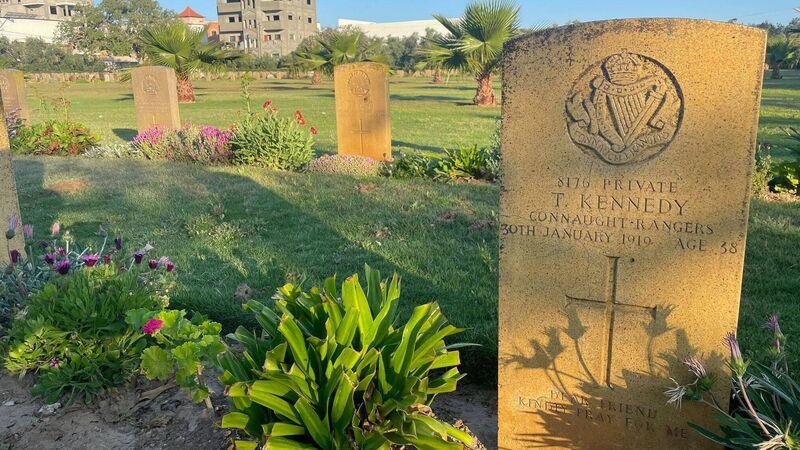
The headstone of Private T. Kennedy from the Connaught Rangers in the war cemetery in Deir al Balah in Gaza before the Israel-Hamas war began in October. Israeli military operations in the area have damaged a section of the graveyard, but the section with the Irish graves, however, remains relatively unscathed. Photo: Hannah McCarthy
Born at the turn of the 19th century to John and Kate Aylward on a lane-way off Barrack Street in Waterford, Herbert/Hubert Aylward died in 1917 in southern Gaza, where he was buried in the commonwealth military cemetery in Deir al Balah.
Aged just 18 years old, Aylward is believed to be the youngest Irish person buried in the war-ravaged Palestinian enclave. The teenager’s name is one of 1,100 carved into the First World War Memorial in Dungarvan in Waterford.




